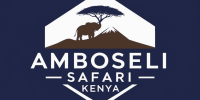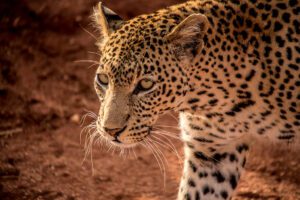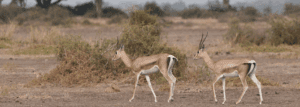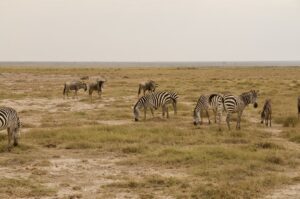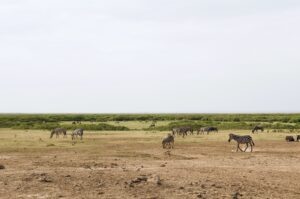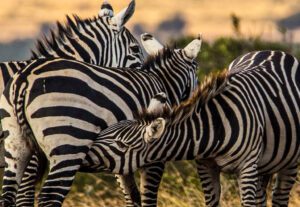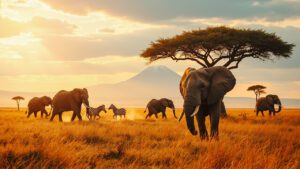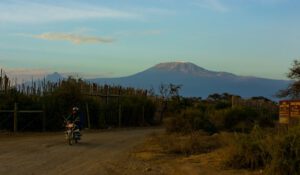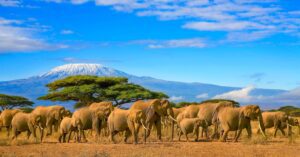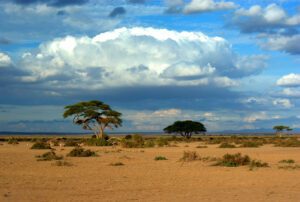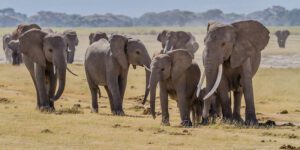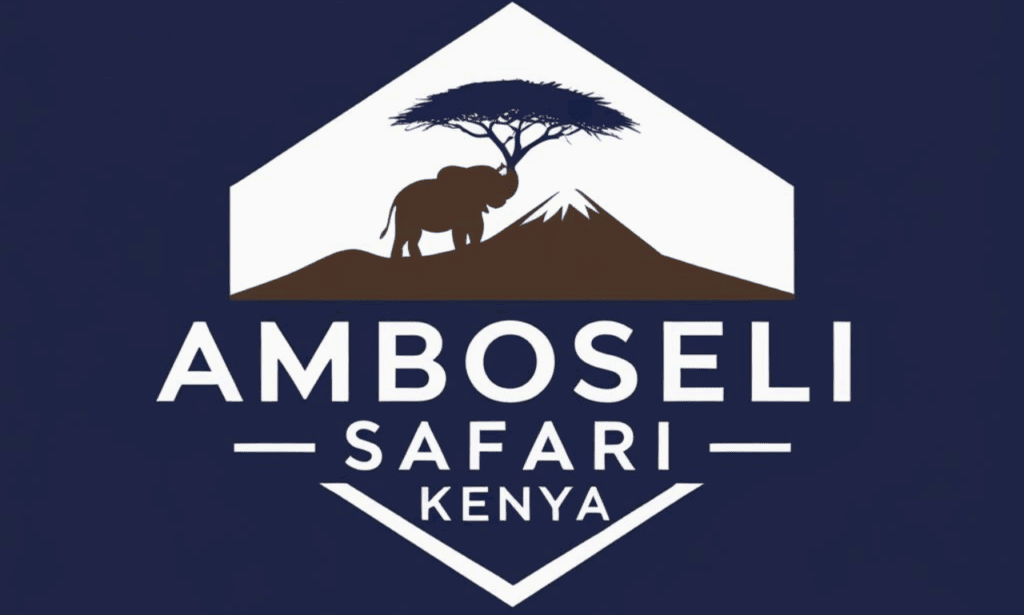What types of animals are most commonly found in Amboseli?
Amboseli is home to a wide variety of animals, making it a favorite destination for wildlife lovers and photographers. The park is best known for its large herds of African elephants, which are easy to spot as they roam the vast open plains. These elephants are often seen walking against the incredible backdrop of Mount Kilimanjaro, and they are one of the main reasons people visit the park.
In addition to elephants, you can find herbivores like zebras, wildebeests, giraffes, and antelopes such as gazelles and impalas. These animals graze on the grasslands and rely on the park’s ecosystem for survival. Carnivores, or predators, are also common in Amboseli. Lions are some of the most iconic residents, often seen resting under trees or roaming in search of prey. Cheetahs and hyenas can also be spotted in the park, particularly in areas with taller grass.
Amboseli is also home to small creatures, like warthogs (which you might recognize as looking similar to Pumbaa from The Lion King), jackals, and mongooses. The park’s wetlands, which form because of underground water coming from Mount Kilimanjaro’s glaciers, create a favorable habitat for many species, including water-related animals like hippos and crocodiles.
Overall, the variety of animals in Amboseli makes it an excellent place to experience a “classic” African safari and see many of the creatures you may have heard about since childhood.
Are there large populations of elephants in Amboseli?
Yes, Amboseli National Park is famous for having one of the largest and most well-studied populations of African elephants in the world. It is considered one of the best places on Earth to observe these gentle giants up close in their natural habitat. The Amboseli elephants are known for their peaceful behavior and remarkable size, as some of the males have massive tusks that make them look like an image from a wildlife documentary. Often seen walking in family groups, these elephants are led by a matriarch, the oldest and most experienced female in the herd.
Scientists have been studying the elephants in Amboseli for decades, learning a lot about their behavior, family structures, and even their communication. These elephants can communicate with each other over long distances using low-frequency rumbles that humans can’t hear. This research is crucial for conservation because it helps people understand how to better protect these magnificent national park animals from threats like poaching and habitat loss.
There are currently thousands of elephants that call Amboseli home. The swamps in the park are especially important for them because they provide water and food. During the dry season, when much of the land becomes barren, the swamps are a lifeline, allowing the elephants to survive even in tough conditions.
In short, Amboseli’s elephants are not only big in numbers, but they’re also a key part of the park’s identity and ecosystem. Without them, Amboseli wouldn’t be the extraordinary wildlife haven that it is today.
What predators live in Amboseli, such as lions or cheetahs?
Amboseli is home to a variety of predators, with the most prominent being lions, cheetahs, leopards, hyenas, and jackals. Known as “apex predators,” lions are one of the most iconic species in Amboseli’s ecosystem. They live in groups called prides, which usually consist of related females, their cubs, and a few adult males. These predators are powerful hunters and typically target large prey like zebras, wildebeests, or even buffalo. In terms of wildlife viewing, lions are among the most sought-after national park animals.
Cheetahs, on the other hand, are built for speed and are the fastest land animals in the world, capable of running at speeds of up to 60 miles per hour (about 96 kilometers per hour). Unlike lions, cheetahs are often solitary or live in small family groups. Their slender bodies and keen eyesight make them excellent hunters of smaller prey, such as impalas and gazelles.
Leopards are more elusive and are rarely seen as often as lions or cheetahs. These predators are strong climbers and are frequently found resting on tree branches during the day, which also helps them stay hidden from potential threats. They hunt at night and have a varied diet that includes small antelopes and birds, showcasing the diversity of animal species in Amboseli.
Another key predator is the spotted hyena, which is famous for its eerie “laughing” calls. Hyenas live in clans and are both scavengers and skilled hunters. They are highly intelligent and often steal kills from lions or cheetahs! Jackals, smaller but still important predators, are opportunistic feeders, hunting small animals or scavenging leftovers from larger predators.
Together, these predators play a critical role in balancing the ecosystem by controlling herbivore populations and ensuring a healthy food chain. For example, by preying on weaker or sick animals, predators indirectly support stronger, healthier prey populations, which contributes to the rich biodiversity of Amboseli National Park animals.
What bird species are prominent in Amboseli?
Amboseli is a bird lover’s paradise, boasting an impressive animal list with over 400 bird species recorded in the area. This incredible variety is due to the park’s unique habitats, which include open savannah, swamps, and woodlands, as well as seasonal wetlands. One of the most iconic bird species found in Amboseli is the flamingo, often seen in large flocks near the park’s lakes. Their striking pink color and synchronized movements make them a favorite sight for visitors exploring Amboseli National Park.
Another prominent bird in Amboseli is the crowned crane. Known for its majestic appearance with a crown of golden feathers on its head, this bird is often found in marshy areas or near swamps. These birds stand upright, giving them a regal look, and they are known for elaborate courtship dances, adding to the park’s allure for wildlife viewing.
Birds of prey also thrive in Amboseli. Martial eagles, among Africa’s largest and most powerful eagles, can be spotted in the park, along with African fish eagles, often seen near water hunting for fish. Secretary birds, with their long legs, make an impressive sight in the open savannah as they hunt snakes and other small animals, showcasing the diversity of Amboseli animals.
Amboseli’s wetlands also support wading birds like herons, egrets, and storks. For example, the saddle-billed stork is easy to recognize due to its large size and distinctive yellow and red bill. Pelicans also frequent the water areas, making their presence known in dramatic, synchronized take-offs and landings.
Whether you’re a casual observer or a serious birdwatcher, the diversity of birdlife in Amboseli is astonishing. The presence of different birds also reflects the health of the ecosystem: wetland birds indicate water availability, while predatory birds show a balanced population of smaller prey species.
Are there rare or endangered species in Amboseli?
Yes, Amboseli is home to several rare or endangered species, which makes the park particularly important for wildlife conservation. Perhaps the most famous endangered animal in Amboseli is the African elephant. Amboseli has one of the largest and best-protected elephant populations in Africa, largely due to conservation efforts in the area. Elephants here are known for their impressive tusks, and sadly, part of the reason they were historically endangered is because of poaching for ivory. Today, Amboseli continues to be a safe haven where elephants are studied and protected.
Another rare species in the park is the cheetah, which is endangered due to habitat loss and human-wildlife conflict. Cheetahs depend on large open spaces for hunting, and Amboseli provides an ideal environment for them. Conservation efforts are critical for this species, as their numbers continue to decrease across Africa.
The lesser flamingo, often seen in the park’s wetlands, is considered near-threatened because its breeding sites, primarily salt lakes in East Africa, are becoming increasingly vulnerable due to environmental changes and human activity.
Additionally, the park’s swamps and wetlands support several rare birds, such as the white-headed vulture, which is listed as critically endangered. Vultures are extremely important for the ecosystem as they clean up carcasses and prevent the spread of disease, but their numbers are declining because of poisoning and habitat changes.
The African wild dog, one of the continent’s most endangered predators, is sporadically sighted in Amboseli. While not resident in the park, packs do occasionally move through the area. Protecting this species is challenging because they roam across vast territories and frequently come into conflict with humans.
By protecting Amboseli and its diverse habitats, conservationists are ensuring survival for these rare and endangered species. Ecotourism also plays a role, as visitors support funding for projects that benefit wildlife.
How is the animal population affected by the environment and seasonal changes in Amboseli?
Amboseli National Park is located in Kenya, near the border with Tanzania, and it is famous for its breathtaking landscapes and wildlife. However, the animal population there is deeply connected to the environment and seasonal changes.
Amboseli has two defining features: its semi-arid savannah ecosystem and the presence of wetlands, which play a crucial role in supporting life. This means that the availability of water and vegetation depends significantly on different seasons. During the wet season, the park experiences rains that fill its swamps, lakes, and waterholes. During this time, there’s an abundance of grass and plants for animals, so herbivores like elephants, zebras, and giraffes thrive. With more food available, many animals stay in the park.
However, during the dry season, water becomes scarce because Amboseli doesn’t have permanent rivers. Animals are forced to gather around the swamps and water sources, as these are the only reliable places left. Predators like lions and hyenas take advantage of this, as prey animals congregate in smaller areas. Some animals migrate out of the park in search of food and water, especially smaller herbivores like gazelles.
This seasonal pattern can lead to stressful conditions during prolonged droughts. For example, lack of rain can cause grass to dry up completely, leaving elephants and other large herbivores struggling to find food. In extreme cases, animals can die from starvation or dehydration. However, the wetlands sustained by Mount Kilimanjaro’s melting ice caps give Amboseli an advantage in providing water year-round compared to surrounding areas.
As an example, severe droughts in Kenya, like those in past decades, made it harder for Amboseli’s animals to survive, and populations declined temporarily. But when rains return, vegetation bounces back, and animal numbers often recover again.
In short, Amboseli’s animal population rises and falls in tune with the environment, with life thriving during rains but struggling during dry periods.
What role does Mount Kilimanjaro play in the ecosystem found in Amboseli?
Mount Kilimanjaro, the tallest mountain in Africa, plays a massive role in Amboseli’s ecosystem, even though it is located in Tanzania, just across the border. This towering mountain impacts Amboseli in two major ways: providing water and influencing the climate.
First, the snow and glaciers on Mount Kilimanjaro act as a natural water reservoir. Over time, ice and snow melt and flow down into underground rivers and streams that feed into the wetlands and swamps of Amboseli. This is why the park has water sources even during the dry season. Amboseli’s swamps, in particular, are fed by underground spring systems connected to Mount Kilimanjaro. These swamps are a lifeline for animals like elephants, hippos, and buffalo, as well as smaller creatures like antelopes and birds.
Second, the mountain affects the climate of the region. Because it’s so tall, Kilimanjaro creates its own weather patterns. For instance, it helps trap moisture and allows clouds to form, which contributes to rainfall in the area. This is why Amboseli, while semi-arid, is able to sustain patches of lush vegetation near its water sources. These oases of greenery, supported by the mountain, become gathering spots for Amboseli’s animals, especially during dry seasons.
As an example of Kilimanjaro’s influence, consider a dry year with little rain. Despite the harsh conditions, you still might see elephants cooling off in the swamps, thanks to the water supply fed by the mountain’s underground springs.
Without Mount Kilimanjaro, Amboseli would likely be a much harsher environment with fewer wetlands, and it would struggle to support its diverse wildlife. The mountain is essentially the park’s hidden “water tower,” making it central to animals’ survival.
What types of herbivores, such as zebras or giraffes, inhabit Amboseli?
Amboseli is home to a wide variety of herbivores, or plant-eating animals, which form the foundation of its ecosystem. These herbivores range in size from small antelopes to towering giraffes, and they play a key role in maintaining the balance of the food chain.
One of the most iconic herbivores in Amboseli is the plains zebra. Zebras are often seen grazing in herds across the grassy plains. They eat a variety of grasses and are known for their distinctive black-and-white striped coats. Zebras are also crucial because they help “mow” grasses down, promoting new growth for other animals to eat.
Another standout herbivore is the African elephant, and Amboseli is famous for its large elephant population. These giants eat a wide range of plants, including grass, leaves, and even tree bark. Elephants shape the environment by knocking down trees or digging for water during dry months, which helps make resources available to other animals.
Giraffes are also a common sight. These are the tallest land animals on Earth, feeding on leaves from acacia trees and other tall vegetation. Their long necks give them access to food that other animals can’t reach, reducing competition.
Smaller herbivores like impalas, grant’s gazelles, and thomson’s gazelles are also plentiful. These fast, agile animals graze on grass and small plants, and their speed and size make them frequent prey for predators like lions and cheetahs.
Other herbivores include wildebeests, known for their seasonal migrations, and buffalo, which prefer wetlands and swampy areas.
All these animals are tightly connected. For example, when elephants clear undergrowth, grazers like zebras and wildebeests can benefit. In turn, predators like lions depend on these herbivores as their main source of food. Without this diversity of herbivores, Amboseli’s ecosystem would not function properly.
Are aquatic animals found in Amboseli’s wetlands or swamps?
Yes, aquatic animals are found in Amboseli’s wetlands and swamps, even though the region is primarily dry and semi-arid. Amboseli National Park, located in southern Kenya near Mount Kilimanjaro, is famous for its vast grasslands and unique ecosystem supported by underground streams from Kilimanjaro’s glaciers. These underground streams feed natural swamps, marshes, and wetlands, creating an oasis in the otherwise dry landscape.
In these wetlands, you’ll find aquatic animals thriving, such as fish, frogs, and various amphibians. While these creatures may not be the most noticeable animals in Amboseli, as the park is renowned for its iconic wildlife like the Amboseli elephants and big game, they play a significant role in maintaining the local ecosystem. The swamps also provide a home for turtles, crustaceans, and insects like dragonflies, which support the food chain that larger animals depend on.
Additionally, the wetlands are critical for semi-aquatic animals such as hippos. Hippos use the swamps to cool down during the day and graze on the surrounding grasslands at night. Many waterbirds, such as herons, egrets, and kingfishers, also depend on these watery habitats for food and nesting sites. For instance, these birds often feed on small fish, insects, and algae found in the pools and streams.
The presence of water in such a dry area makes the wetlands a hub of activity and a vital resource for other animals, including the popular animal species like elephants, buffaloes, and zebra, which come to drink and bathe. These swampy areas are a reminder of how ecosystems can thrive when different habitats, wetlands and dry savannahs, exist side by side.
Without these wetlands, Amboseli’s ecosystem would struggle to support its incredible biodiversity. Conservation efforts around Amboseli aim to preserve these water sources and ensure they remain a lifeline for aquatic and terrestrial species alike, including the diverse animal list found in this unique national park.
How do local Maasai communities view and interact with the animals in Amboseli?
The Maasai people, indigenous to the Amboseli region, have a rich and complex relationship with the wildlife species found there. Traditionally, the Maasai view many of the national park animals in Amboseli with respect because their culture emphasizes harmony between humans, livestock, and nature. Their livelihoods historically revolve around cattle herding, which relies on the same ecosystems shared with wildlife.
For centuries, the Maasai coexisted with animals like Amboseli elephants, lions, and zebras. They tend to view these creatures as vital parts of the natural world, and in many cases, animals feature prominently in their folklore and spiritual beliefs. For example, Maasai myths often attribute special significance to lions as symbols of bravery. However, predators such as lions, hyenas, or cheetahs may also be seen as threats to their livestock.
Today, the Maasai remain stewards of the land and often participate in conservation efforts. Many Maasai communities work with organizations like the Kenya Wildlife Service (KWS) and NGOs to monitor wildlife and protect migration corridors. For instance, instead of seeing animals solely as competitors for grazing land, the Maasai increasingly understand the importance of preserving wildlife for ecotourism, which brings economic benefits to the region. Shared revenues from tourism projects help fund schools, medical services, and infrastructure for Maasai families.
However, challenges exist. Human-wildlife conflicts, like elephants trampling crops or lions preying on cattle, create tension between livelihoods and conservation goals. Programs like predator compensation schemes have been introduced to mitigate these conflicts by offering financial compensation to herders who lose livestock to predators.
In summary, the Maasai have a deep cultural connection with the animals of Amboseli, one that evolves as they balance preserving their traditions with modern conservation efforts and economic realities.
What conservation efforts are in place to protect the wildlife in Amboseli?
Amboseli’s wildlife is protected through a combination of government programs, non-governmental organizations, and community-driven initiatives. The park itself, overseen by the Kenya Wildlife Service (KWS), serves as a critical conservation zone, with strict anti-poaching laws and wildlife monitoring systems in place to protect iconic species like Amboseli elephants and lions. Rangers patrol the park to ensure that national park animals are not harmed, and the number of visitors is regulated to minimize environmental disturbances.
One important conservation focus is the protection of elephants in Amboseli, as the park is home to one of Africa’s most studied and admired elephant populations. Organizations like the Amboseli Trust for Elephants have been working for decades to monitor herds, prevent poaching, and educate both locals and tourists about the need to protect these gentle giants. Satellite tracking technology is used to study their migration patterns and ensure proper policies are in place for managing grazing corridors and reducing human-wildlife conflict, particularly concerning the Amboseli national park animals.
Speaking of conflict, many conservation efforts focus on resolving disputes between humans and animals. Programs like livestock compensation funds help reduce retaliation killings of predators like lions. In some cases, Maasai communities are involved in creating wildlife sanctuaries on their land, ensuring that animals have migration corridors that connect to Amboseli National Park. This is vital for the survival of various wildlife species, including the majestic Maasai giraffe.
Ecotourism also plays a huge role in conserving Amboseli’s wildlife. Tourists from all over the world visit Amboseli, and revenue from ticket sales, tours, and lodges helps fund conservation work. Local Maasai groups are often partners in conservation-focused tourism, which creates incentives to preserve animals and their habitats, including the rich diversity of wildlife viewing opportunities.
In addition, reforestation efforts, sustainable water use to preserve the wetlands, and global campaigns to combat climate change (which threatens Amboseli’s delicate ecosystem) are all part of the broader conservation picture. Collaboration between international conservationists, scientists, and local communities is essential to ensure Amboseli’s wildlife thrives for generations to come.
